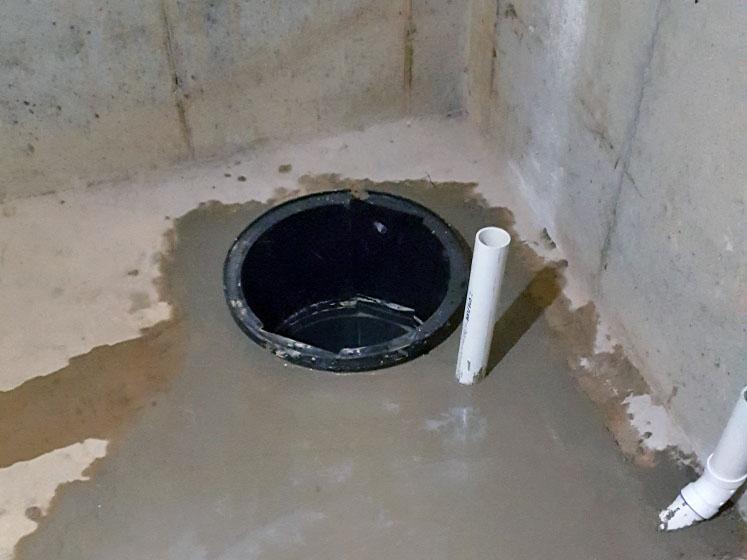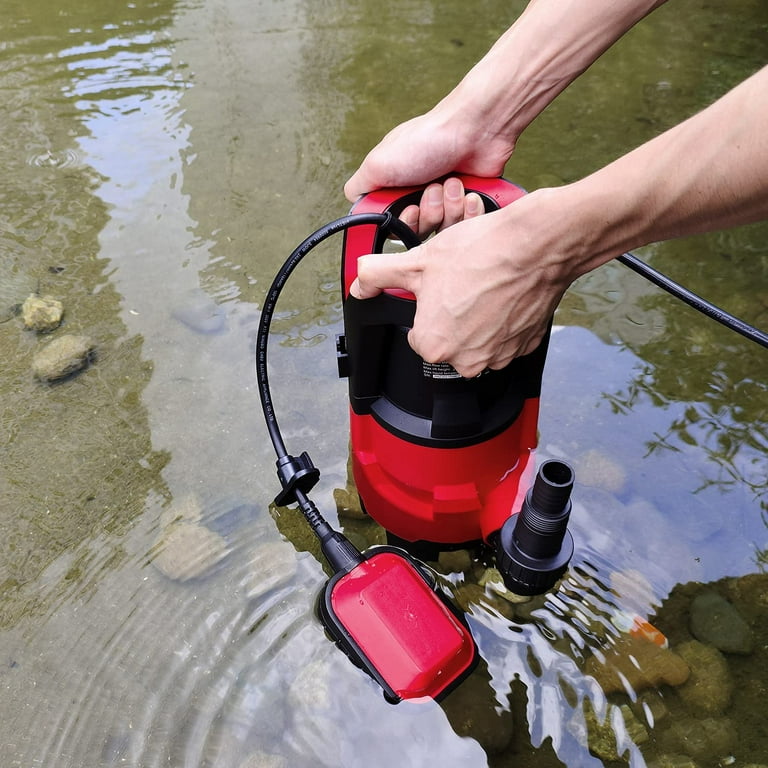An Definitive Guide to Taking Care of a Sump Pump
An Definitive Guide to Taking Care of a Sump Pump
Blog Article
What are your thoughts concerning Steps to Cleaning Your Sump Pump Properly?

Sump pumps are critical elements in numerous homes, particularly in locations susceptible to flooding or extreme wetness. They assist prevent water damage by effectively eliminating excess water from basements or crawl spaces. Nonetheless, like any other device, sump pumps call for routine upkeep to ensure they work effectively when required the most. Cleaning your sump pump is a vital part of its upkeep, and understanding exactly how to do it effectively can conserve you from costly repair services and possible disasters.
Intro
Keeping a clean sump pump is essential for its correct performance and long life. Neglecting this crucial task can lead to blockages, malfunctions, and eventually, water damage to your residential or commercial property. Consequently, discovering how to cleanse a sump pump is important for home owners that rely upon these gadgets to maintain their basements dry and secured.
Comprehending the Sump Pump
Before diving into the cleansing process, it's necessary to have a standard understanding of just how a sump pump works. Usually set up in a pit or basin listed below the cellar flooring, a sump pump consists of several crucial parts, including a pump, a float switch, and a discharge pipeline. When water builds up in the pit, the float switch triggers the pump, which after that pumps the water out through the discharge pipeline, away from the building's foundation.
Indicators of a Dirty Sump Pump
Understanding when your sump pump requires cleansing is critical for stopping prospective malfunctions. Some typical indicators that indicate a filthy sump pump include unusual sounds throughout procedure, minimized water flow, and visible debris in the pit. If you notice any of these signs, it's necessary to cleanse your sump pump quickly to stay clear of any kind of more concerns.
Preparing for Cleansing
Before you start cleaning your sump pump, it's necessary to take some security preventative measures. Beginning by shutting down the power to the pump to prevent any kind of electric crashes. Additionally, wear ideal safety equipment, such as handwear covers and goggles, to secure yourself from dust, debris, and potential pathogens.
Detailed Overview to Cleaning Up a Sump Pump
Shutting Off the Power
Begin by disconnecting the power supply to the sump pump to prevent any type of mishaps while cleaning.
Eliminating Particles and Dirt
Use a pail or a scoop to get rid of any noticeable particles, dirt, or sediment from the sump pit. Dispose of the particles appropriately to stop it from clogging the pump or the discharge pipe.
Cleaning the Pump and Drift Switch
As soon as the pit is clear of debris, thoroughly eliminate the pump from the pit. Examine the pump and the float button for any type of indicators of damage or wear. Make use of a soft brush or cloth to cleanse the surfaces and get rid of any type of collected gunk.
Purging the System
After cleaning the pump and float button, purge the sump pit with clean water to get rid of any staying dust or debris. This will assist guarantee that the pump runs efficiently and effectively.
Looking For Proper Functioning
Prior to re-installing the pump, carry out a quick test to guarantee that the float switch activates the pump correctly. Put some water right into the sump pit and observe the pump's operation. If whatever is working correctly, you can reconstruct the pump and reconnect the power supply.
Upkeep Tips to Keep Your Sump Pump Clean
In addition to periodic cleaning, there are a number of maintenance tips you can follow to keep your sump pump in optimum problem:
Final thought
Cleansing your sump pump is a critical aspect of its maintenance and guarantees that it operates successfully when you require it the most. By adhering to the steps laid out in this overview and integrating normal upkeep into your regimen, you can extend the lifespan of your sump pump and secure your home from water damage.
6 STEPS ON HOW TO CLEAN A SUMP PUMP PROPERLY
UNDERSTANDING SUMP PUMPS
Your sump pump plays a crucial role in protecting your home by managing and removing excess water. It primarily functions as a “shield”, guarding your basement against the damaging effects of water accumulation. The pump is housed in a sump pit in the lowest part of your basement, and its job is to pump out any water that collects there.
During heavy rainfalls or when snow melts rapidly, water can infiltrate your basement, posing potential risks like flooding, structural damage, and harmful mold growth. Here, the sump pump springs into action, pumping out the intruding water and directing it away from your home.
SAFETY FIRST
Before cleaning, remember to prioritize safety. Disconnect the sump pump from the power source to prevent any accidental electric shocks. Also, wear sturdy gloves to protect your hands from any sharp or dirty components within the pump.
REMOVE THE SUMP PUMP
After ensuring your safety, the next step is to remove the sump pump from its pit. Doing this might require careful maneuvering as you don’t want to damage any pump components. Once removed, clean the sump pit to remove any accumulated debris or sludge.
INSPECT THE PUMP
Inspect the pump for any visible signs of wear or damage. Check the power cord, float switch, and impeller housing. If any components look worn out or damaged, consider replacing them to ensure optimal performance.
CLEAN THE PUMP
Thoroughly clean the pump with warm, soapy water. Make sure to rid it of any dirt, gravel, or other debris that might impede its performance. You can use a toothbrush to clean the small, hard-to-reach parts of the pump.
REINSTALL THE SUMP PUMP
Reinstall the pump into the sump pit Make sure it’s positioned correctly to remove the water effectively Once it’s back in place, reconnect it to the power source TEST THE PUMP
Finally, pour some water into the pit to ensure the pump works correctly. It should start automatically and begin pumping out the water; if it doesn’t, check the power source and the positioning of the pump.
Remember, while cleaning your sump pump is an essential part of home maintenance, hiring a professional plumber for a thorough inspection and cleaning at least once a year is also important. This will ensure that your pump is in optimal condition, ready to protect your home from potential water damage.
BEST PRACTICES FOR CLEANING SUMP PUMP DISCHARGE PIPES
Regular Inspection: Regularly inspect your discharge pipes, especially during heavy rainfall or snowmelt periods. Look for any signs of blockage or damage. Early detection of problems can prevent serious issues down the line. Periodic Cleaning: Over time, sediment and debris can accumulate in the discharge pipes, impeding the flow of water. Regular cleaning helps keep the pipes clear and functioning efficiently. You can use a high-pressure water jet to effectively clean the pipes. Insulation During Winter: In colder climates, discharge pipes can freeze, blocking the outflow of water. Protect your discharge pipes from freezing temperatures by insulating them with foam pipe insulation. This will ensure the sump pump can continue to discharge water even in freezing conditions. Proper Positioning: The discharge pipe should be positioned to direct water away from your home’s foundation. Improper positioning can lead to water seeping back into the basement. Ensure the pipe is long enough and angled correctly. Installation of a Check Valve: A check valve prevents water from flowing back into your sump pit after the pump has pushed it out. Installing a check valve helps maintain the efficiency of your sump pump and reduces the risk of flooding. Minimize Pipe Turns: Every curve or turn in the discharge pipe can decrease the efficiency of water flow. By minimizing turns and bends in your discharge pipe, you can increase the efficiency of your sump pump. https://www.fullspeedplumbing.com/how-to-clean-a-sump-pump-properly9999/

As a serious person who reads about , I thought sharing that excerpt was really helpful. Enjoyed our write up? Please quickly share it. Help another person locate it. Thank you so much for your time spent reading it.
Suggested Site Report this page